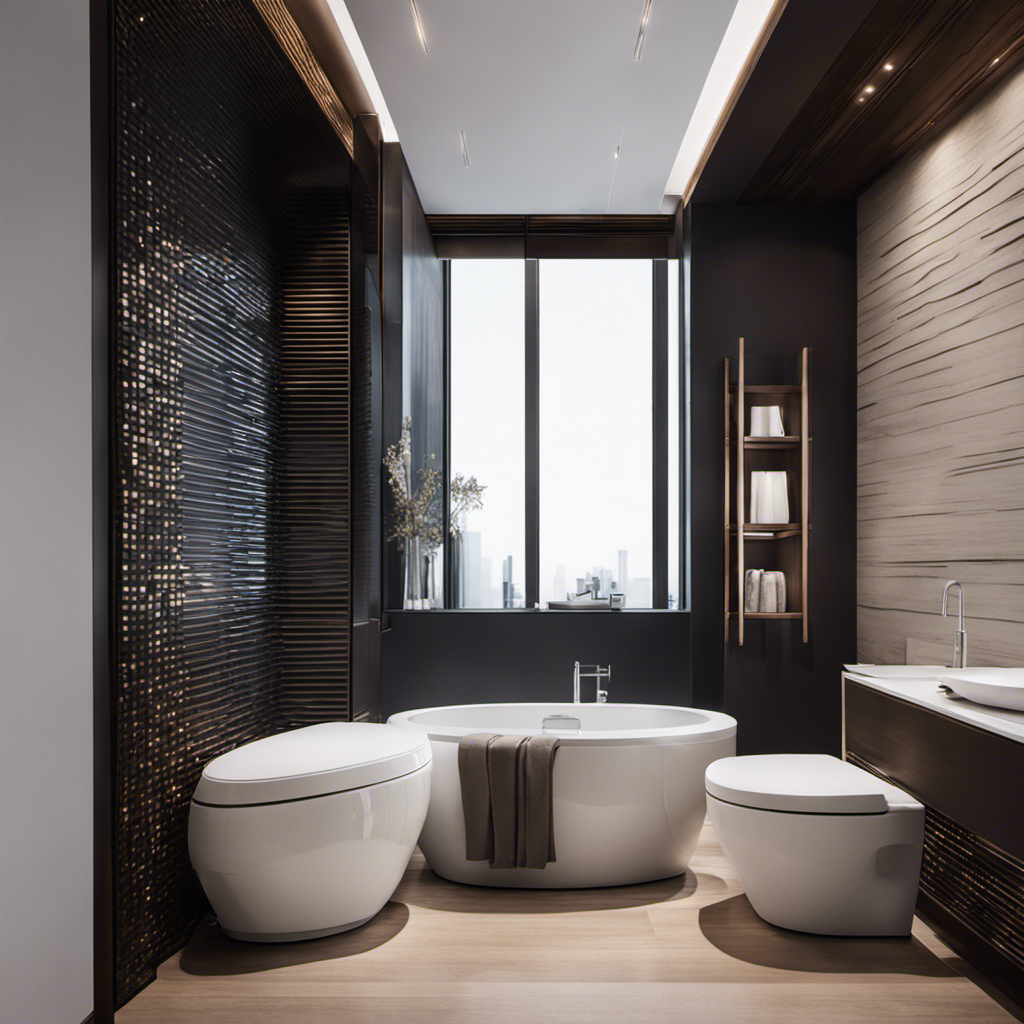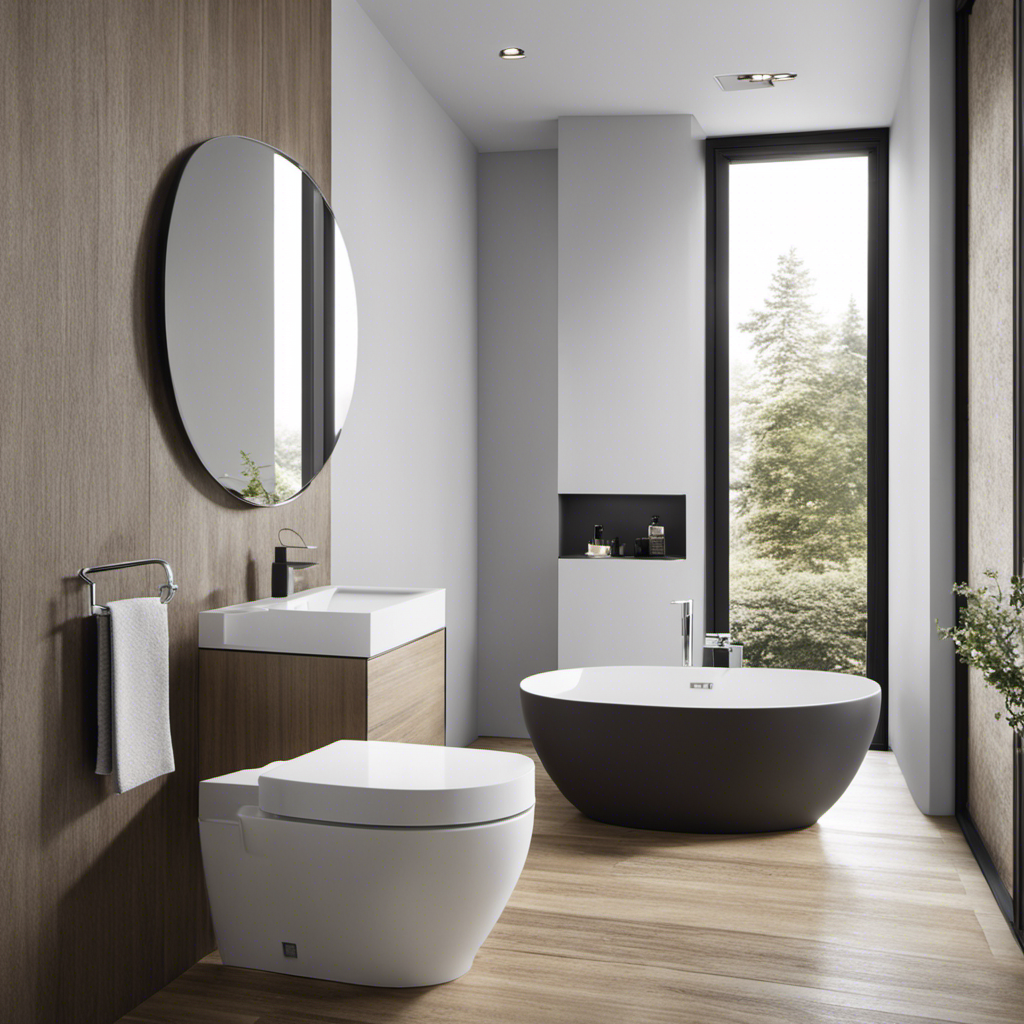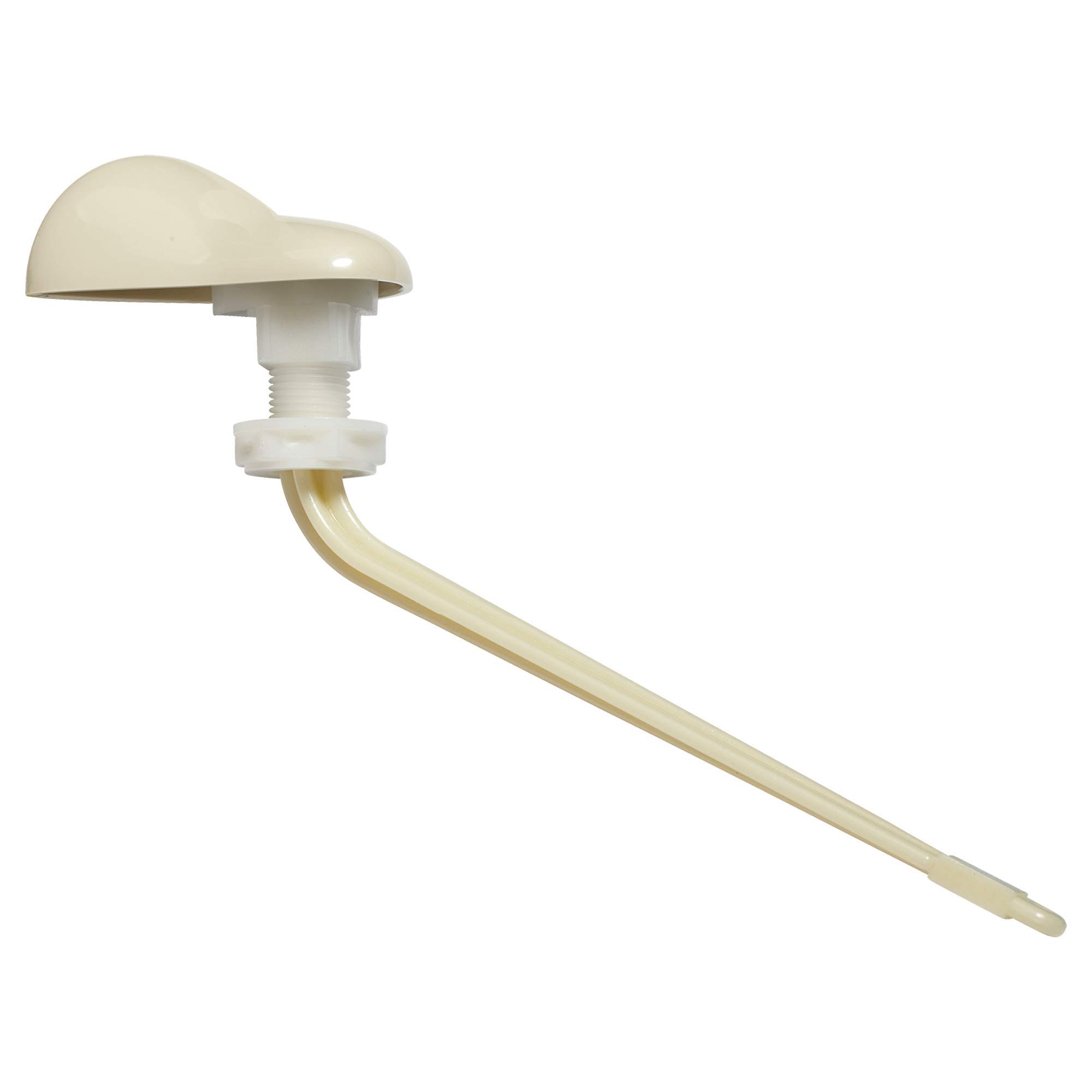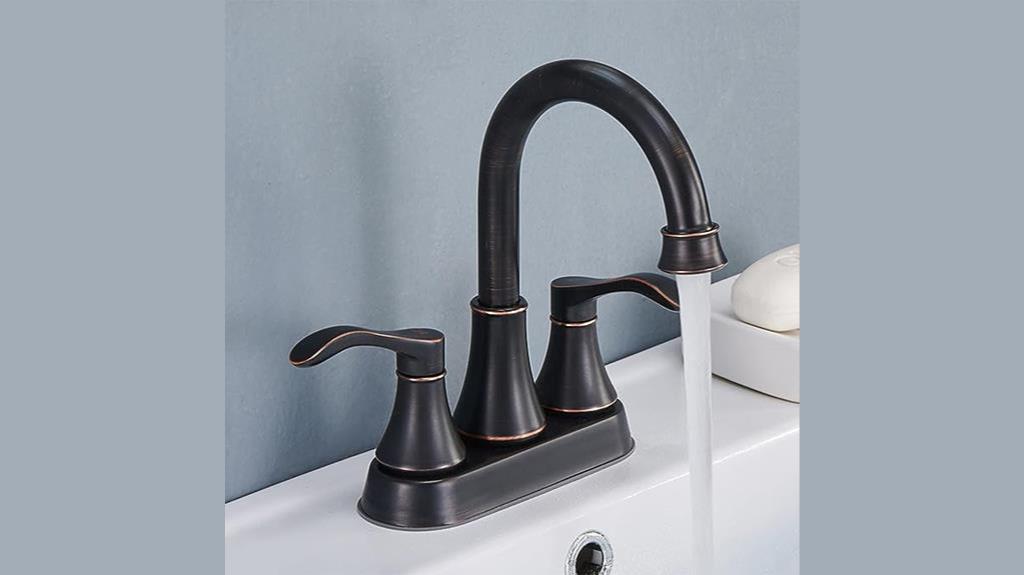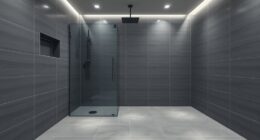Are you tired of dealing with outdated toilets that lack modern conveniences? Look no further! In this ultimate guide, I’ll walk you through everything you need to know about smart toilet features and installation.
From dual-zone bidets and automatic lids to touchscreen controls and advanced flushing technology, these toilets offer a range of benefits that will revolutionize your bathroom experience.
So, let’s dive in and explore the world of smart toilets together!
Key Takeaways
- Smart toilets offer a wide range of advanced features such as dual-zone bidet, automatic lid, warm air dryer, and touchscreen remote control.
- Installation of smart toilets can be more challenging compared to traditional toilets, requiring attention to detail and potential professional assistance.
- Smart toilets may require specific replacement parts and may have tricky toilet seat installation.
- Smart toilets provide various benefits such as reduced water usage, energy efficiency, enhanced hygiene with integrated bidet functionality, and smart sensors for leak detection and health analysis.
The Evolution of Smart Toilets
I’ve noticed that smart toilets have come a long way in terms of features and technology. The advantages of smart toilets are numerous.
They offer a range of features like dual-zone bidets, automatic lids, warm air dryers, and adjustable heated seats. They also have touchscreen remote controls, memory settings, and multiple water pressure options for a personalized experience. The integrated bidet functionality provides superior cleaning compared to toilet paper, and the self-cleaning features eliminate the need for expensive cleaning products.
However, there are also some disadvantages to consider. Smart toilets can be more challenging to install, and some require a GFI outlet. They may also require specific replacement parts and professional assistance for replacement. Additionally, smart toilets that require electricity can increase the electric bill.
Despite these disadvantages, the advantages of smart toilets, such as enhanced hygiene, water conservation, and energy efficiency, make them an attractive choice for modern bathrooms.
Understanding Smart Toilet Features
The dual-zone bidet feature provides enhanced cleaning and comfort during bathroom use. This is just one of the many advancements in toilet technology that smart toilets offer.
Smart toilets have a range of features that bring convenience, hygiene, and efficiency to the bathroom. In the healthcare industry, these benefits are particularly valuable.
Smart toilets with integrated bidet functionality provide superior cleaning compared to traditional toilet paper, ensuring optimal hygiene. Adjustable water temperature and pressure settings cater to sensitive skin, while self-cleaning nozzles minimize the use of harmful cleaning chemicals.
Smart sensors can even detect potential health issues through urine and stool analysis, offering valuable insights for healthcare professionals. Additionally, the reduced water consumption and energy-efficient design of smart toilets contribute to conservation efforts and lower costs in healthcare facilities.
Overall, the advancements in smart toilet technology bring numerous benefits to the healthcare industry.
Choosing the Right Smart Toilet for Your Needs
When selecting a smart toilet, I consider my specific needs and preferences to ensure the right fit for my bathroom. Smart toilets offer numerous benefits, such as enhanced hygiene, water and energy efficiency, and convenience.
To make an informed decision, I compare different smart toilet brands based on their features, functionality, and customer reviews. Some popular brands include Toto, Kohler, and BioBidet.
Toto offers a wide range of smart toilets with features like dual-zone bidet, automatic lid, and adjustable heated seat. Kohler’s smart toilets come with options like touchscreen remote control, vortex dual-flush, and night light. BioBidet focuses on integrated bidet functionality, self-cleaning nozzles, and customizable user profiles.
Installation Considerations for Smart Toilets
Installing a smart toilet requires careful attention to detail and consideration of factors such as power requirements and rough-in sizes. It’s important to ensure that your smart toilet is compatible with your existing electrical system and plumbing setup.
Here are some smart toilet installation tips to keep in mind:
-
Check the power requirements: Some smart toilets require a GFI outlet, so make sure you have one nearby. If not, you may need to hire an electrician to install one.
-
Verify the rough-in sizes: Smart toilets come in different sizes, so it’s crucial to measure the rough-in dimensions of your bathroom to ensure a proper fit.
-
Pay attention to detail during installation: Follow the manufacturer’s instructions carefully and double-check all connections. A small mistake during installation can lead to leaks or malfunctions.
-
Seek professional assistance if needed: If you’re unsure about any aspect of the installation process, it’s best to hire a professional plumber or electrician to ensure everything is done correctly.
Common issues with smart toilet installation include incorrect rough-in sizes, improper electrical connections, and leaks. By following these installation tips and seeking professional help when needed, you can avoid these common issues and enjoy the benefits of a smart toilet in your bathroom.
Step-by-Step Guide to Installing a Smart Toilet
First, I need to gather all the necessary tools and materials for installing my new smart toilet. After carefully unpacking the smart toilet, I ensure that I have all the required components, including the mounting hardware, water supply line, and power cord. With everything in hand, I begin the installation process.
The first step is to shut off the water supply to the existing toilet and remove the old fixture. Then, I clean the area and prepare the floor for the new smart toilet. Next, I carefully position the toilet over the flange and secure it in place using the provided mounting hardware.
Once the toilet is securely installed, I connect the water supply line and ensure there are no leaks. I also connect the power cord to a nearby GFI outlet, if necessary. Finally, I test the smart toilet to ensure all the features, such as the dual-zone bidet and automatic flushing, are functioning properly.
In case of any troubleshooting needs, it is important to consult the manufacturer’s instructions or contact customer support for assistance.
The benefits of smart toilet technology are numerous. The integrated bidet functionality provides enhanced hygiene and eliminates the need for excessive toilet paper usage. The adjustable water temperature and pressure settings allow for a personalized and comfortable experience. The automatic flushing and touchless operation ensure a hands-free and sanitary environment. Additionally, the self-cleaning features minimize maintenance efforts and eliminate the need for expensive cleaning products. Smart sensors detect leaks, prevent water wastage, and even analyze urine and stool for potential health issues. With reduced water consumption and energy-efficient design, smart toilets contribute to water and energy conservation.
Overall, smart toilets offer convenience, comfort, and improved sustainability in the bathroom.
Troubleshooting Common Smart Toilet Issues
I encountered an issue with my smart toilet and needed to troubleshoot the problem.
Smart toilet troubleshooting can help resolve common issues with these advanced bathroom fixtures.
One common problem is a malfunctioning bidet feature, which may be caused by a clogged nozzle or water supply issue. To fix this, the nozzle should be cleaned or replaced, and the water supply should be checked for any blockages.
Another issue that may arise is a malfunctioning flush system, which could be due to a faulty sensor or a problem with the water supply. In this case, the sensor should be inspected and cleaned, and the water supply valve should be checked for any blockages or leaks.
Additionally, connectivity problems with the touchscreen remote control can be resolved by ensuring that the batteries are properly inserted and that the remote control is within range of the toilet.
Maintenance Tips for Smart Toilets
One important aspect of maintaining a smart toilet is regular cleaning and disinfecting to ensure optimal hygiene. Smart toilet cleaning is essential for extending the lifespan of the toilet and keeping it in good working condition.
To clean a smart toilet, start by turning off the power and removing any detachable parts, such as the seat and lid. Use a mild cleaner and a soft cloth or sponge to wipe down the exterior and interior surfaces of the toilet. Pay special attention to the bidet wand and nozzles, as these can accumulate residue over time. Rinse thoroughly with water and dry with a clean towel.
Additionally, it is important to regularly disinfect the toilet to eliminate any bacteria or germs. Follow the manufacturer’s instructions for recommended cleaning products and methods.
Enhancing Hygiene With Smart Toilet Features
After discussing the maintenance tips for smart toilets, let’s now delve into the exciting topic of enhancing hygiene with smart toilet features.
As an owner of a smart toilet, I have discovered the incredible benefits it offers in terms of cleanliness and health monitoring. Here are some key features that contribute to a more hygienic experience:
-
Customizable settings:
-
Adjustable water temperature and pressure settings for a personalized cleansing experience.
-
Automatic seat warming feature for added comfort and relaxation.
-
Health monitoring features:
-
Smart sensors that can detect potential health issues through urine and stool analysis, providing valuable insights for early detection.
-
Self-cleaning nozzles ensure optimal hygiene and minimize the risk of bacterial growth.
Having these features in a smart toilet not only promotes cleanliness but also allows for a proactive approach towards maintaining our health. It’s truly amazing how technology has transformed something as simple as a toilet into a sophisticated tool for our well-being.
Energy Efficiency and Water Conservation With Smart Toilets
By reducing water consumption and lowering electricity costs, the energy-efficient design of smart toilets contributes to both environmental sustainability and financial savings. Smart toilets are designed with advanced flushing technology that ensures effective waste removal while minimizing water usage. The integrated bidet functionality provides enhanced hygiene and reduces the need for toilet paper, saving money and reducing waste. The self-cleaning features of smart toilets eliminate the need for expensive cleaning products and minimize maintenance efforts. Smart sensors detect leaks and prevent water wastage, saving on potential repair costs. Additionally, the adjustable water temperature and pressure settings offer a personalized experience, while the automatic seat warming feature adds extra comfort. With hands-free operation and customizable user profiles, smart toilets offer convenience and ease of use. Overall, the energy-efficient design and smart features of smart toilets provide numerous benefits, making them a worthwhile investment for both homes and businesses.
| Benefits of Smart Toilet Technology | ||
|---|---|---|
| 1. Reduced water consumption | 3. Self-cleaning features minimize maintenance efforts | 5. Smart sensors detect leaks and prevent water wastage |
| 2. Lower electricity costs | 4. Integrated bidet functionality reduces the need for toilet paper, saving money | 6. Adjustable water temperature and pressure settings for a personalized experience |
Exploring Advanced Features of Smart Toilets
I’m fascinated by the customizable user profiles and voice control integration that smart toilets offer. It’s incredible how these toilets have advanced in functionality and convenience.
The bidet feature is a standout, providing a superior cleaning experience compared to traditional toilet paper. With adjustable water temperature and pressure settings, it caters to individual preferences and sensitive skin.
Another remarkable feature is the touchless operation, which allows for hands-free flushing and lid opening. This not only enhances hygiene but also adds a touch of luxury to the bathroom experience. The benefits of touchless operation include reduced germ transmission and increased convenience.
With just a simple voice command or a tap on the smartphone app, the toilet can be controlled effortlessly. Smart toilets truly revolutionize the way we use the bathroom, making it more personalized and convenient.
Smart Toilets: The Future of Bathroom Technology
Now that we’ve explored the advanced features of smart toilets, let’s delve into the future of bathroom technology.
One of the most significant benefits of smart toilets is their potential in elderly care. These innovative devices can enhance the safety and comfort of seniors by incorporating features like adjustable seat height, automatic flushing, and touchless operation. Smart toilets can also analyze urine and stool samples, detecting potential health issues and alerting caregivers if necessary. This advanced technology not only provides peace of mind for both the elderly and their caregivers but also promotes independence and dignity.
In addition to their functional advantages, smart toilets also have a positive impact on bathroom aesthetics. With sleek and modern designs, these toilets can transform any bathroom into a stylish and sophisticated space. The integration of features like nightlights, customizable user profiles, and voice control further enhances the overall look and feel of the bathroom. With smart toilets, you no longer have to sacrifice style for functionality. Instead, you can enjoy the benefits of cutting-edge technology while maintaining a visually appealing and aesthetically pleasing bathroom.
Frequently Asked Questions
Can Smart Toilets Be Installed in All Types of Bathrooms, Regardless of Size or Layout?
Yes, smart toilets can be installed in all types of bathrooms, regardless of size or layout. However, it is important to consider space limitations and ensure that the necessary plumbing and electrical requirements are met for proper installation.
Are There Any Health Risks Associated With Using a Smart Toilet, Such as Exposure to Electromagnetic Radiation?
I must admit, I was concerned about the health risks associated with using a smart toilet, particularly exposure to electromagnetic radiation. However, after thorough research, I found that smart toilets are designed to be safe and do not pose any significant health risks in terms of electromagnetic radiation.
How Do Smart Toilets Handle Power Outages or Electrical Malfunctions?
During a power outage or electrical malfunction, smart toilets typically have power backup systems in place to ensure uninterrupted functionality. Safety measures are implemented to protect users from any potential hazards during such situations.
Are There Any Privacy Concerns With Smart Toilets, Such as Data Collection or Security Vulnerabilities?
Privacy concerns with smart toilets include potential data collection and security vulnerabilities. It is crucial to ensure that smart toilets have robust security measures in place to protect user information and prevent unauthorized access.
Can Smart Toilets Be Retrofitted Onto Existing Traditional Toilets, or Do They Require a Complete Replacement?
Smart toilets can be retrofitted onto existing traditional toilets, but it’s important to consider the cost and compatibility. Retrofitting options vary and may require additional plumbing or electrical work, so a complete replacement might be more practical.
Conclusion
In conclusion, smart toilets are revolutionizing the way we experience our bathrooms. With their advanced features and benefits, they offer a level of convenience, cleanliness, and efficiency that traditional toilets simply can’t match.
From dual-zone bidets to self-cleaning technology, these toilets provide a superior level of hygiene. They also help us save water and reduce electricity costs, making them a smart choice for both our wallets and the environment.
As the saying goes, ‘Out with the old, in with the new,’ and smart toilets are definitely the way of the future in bathroom technology.
